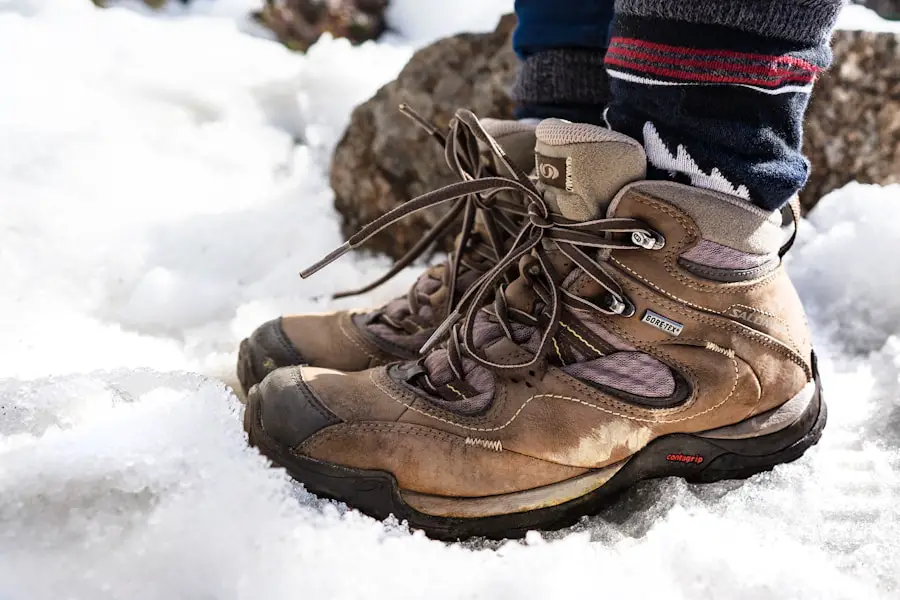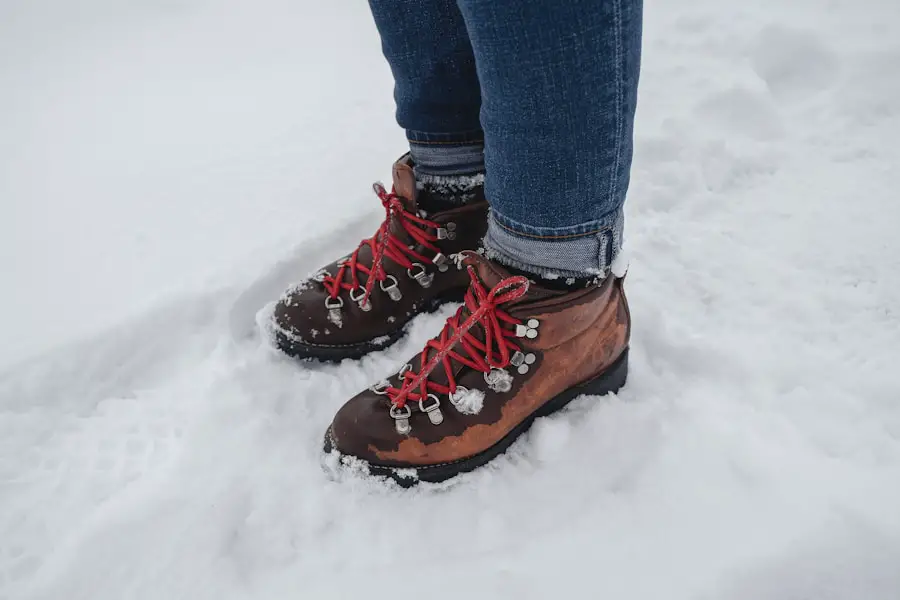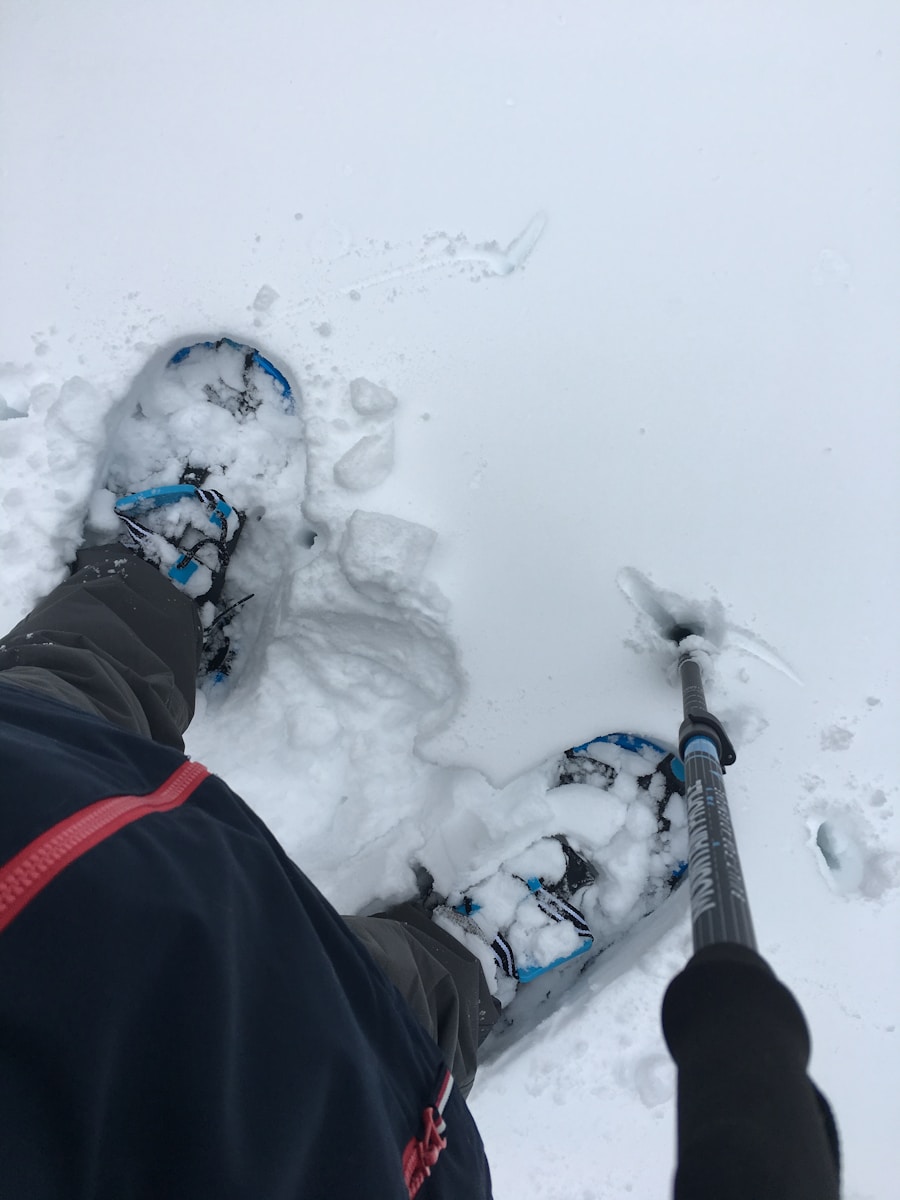When venturing into snowy environments, the significance of appropriate footwear cannot be overstated. Snow-covered terrains present unique challenges, including slippery surfaces, cold temperatures, and the potential for snow accumulation that can impede movement. Proper footwear is essential not only for comfort but also for safety.
Wearing the wrong type of shoes can lead to a host of issues, from frostbite to slips and falls, which can result in serious injuries. The right footwear acts as a barrier against the elements, providing insulation, traction, and support. Moreover, the design of winter footwear is specifically tailored to address the challenges posed by snow.
Features such as waterproof materials, insulated linings, and rugged outsoles are crucial for maintaining warmth and preventing moisture from seeping in. In snowy conditions, the risk of hypothermia increases significantly if feet become wet and cold. Therefore, investing in high-quality footwear designed for winter conditions is not merely a matter of comfort; it is a critical aspect of outdoor safety and well-being.
Key Takeaways
- Proper footwear is crucial in snowy conditions to prevent slips, falls, and frostbite.
- Hiking boots provide better traction, ankle support, and insulation in snowy terrain.
- Hiking boots can be heavy and less flexible, leading to potential discomfort and fatigue.
- Consider factors like insulation, waterproofing, and traction when choosing hiking boots for snow.
- Regularly clean, waterproof, and inspect hiking boots to ensure they remain effective in snowy conditions.
Advantages of Hiking Boots in Snow
Hiking boots are often lauded for their versatility and durability, making them a popular choice for snowy conditions. One of the primary advantages of hiking boots is their robust construction, which typically includes reinforced toe caps and sturdy materials that can withstand harsh weather. This durability is essential when navigating through snow-laden trails where sharp objects or hidden obstacles may be present.
The solid build of hiking boots provides the necessary protection against potential injuries while hiking in unpredictable terrains. Another significant advantage is the traction offered by hiking boots. Many models come equipped with specialized outsoles designed to grip various surfaces, including icy and snowy ground.
This feature is particularly beneficial when traversing steep inclines or declines, where slipping can lead to falls. Additionally, hiking boots often provide excellent ankle support, which is crucial when walking on uneven surfaces covered in snow. This support helps prevent sprains and other injuries that can occur when the foot rolls or twists unexpectedly.
Potential Drawbacks of Hiking Boots in Snow

Despite their many advantages, hiking boots are not without their drawbacks when it comes to snowy conditions. One notable concern is their weight. Many hiking boots are heavier than traditional winter footwear, which can lead to fatigue during long hikes in deep snow.
The added weight can become cumbersome, especially when trudging through thick snow or navigating uphill trails. This fatigue can detract from the overall hiking experience and may even discourage individuals from undertaking longer excursions. Another potential drawback is breathability.
While many hiking boots are designed to be waterproof, this feature can sometimes come at the expense of ventilation. In snowy conditions, moisture from sweat can become trapped inside the boot, leading to dampness and discomfort. If the interior of the boot becomes wet from perspiration, it can create an environment conducive to cold feet, which is counterproductive to the purpose of wearing insulated footwear.
Therefore, it is essential to consider both waterproofing and breathability when selecting hiking boots for snowy adventures.
Tips for Choosing the Right Hiking Boots for Snow
| Feature | Importance |
|---|---|
| Insulation | High |
| Waterproofing | High |
| Traction | High |
| Ankle Support | High |
| Fit | High |
| Weight | Medium |
| Material | Medium |
| Price | Low |
Selecting the right hiking boots for snowy conditions involves several key considerations that can significantly impact comfort and performance. First and foremost, it is crucial to look for boots that offer waterproof protection. Materials such as Gore-Tex or other waterproof membranes are ideal as they keep moisture out while allowing sweat to escape.
This balance is essential for maintaining dry feet during extended hikes in snow. Additionally, insulation is a critical factor to consider. The level of insulation required will depend on the expected temperatures and duration of exposure to cold conditions.
Boots with Thinsulate or similar insulation materials provide warmth without excessive bulk, allowing for better mobility while keeping feet cozy. It’s also advisable to try on boots with thicker socks to ensure a proper fit; a snug fit prevents blisters while allowing enough room for insulation. Traction is another vital aspect when choosing hiking boots for snow.
Look for boots with deep lugs and rubber outsoles designed specifically for winter conditions. Some brands even offer models with built-in spikes or crampons that enhance grip on icy surfaces. It’s also beneficial to consider the height of the boot; taller models provide additional ankle support and help keep snow out.
How to Properly Maintain Hiking Boots in Snowy Conditions
Proper maintenance of hiking boots is essential for ensuring their longevity and performance in snowy conditions. After each hike, it is important to clean the boots thoroughly to remove any salt, dirt, or debris that may have accumulated during the trek. Using a soft brush or cloth along with lukewarm water can effectively clean the exterior without damaging the materials.
For leather boots, applying a specialized leather cleaner helps maintain suppleness and prevents cracking. Drying is another critical aspect of maintenance. After cleaning, it’s essential to allow the boots to air dry naturally at room temperature; direct heat sources like radiators or hair dryers should be avoided as they can damage the materials.
To help absorb moisture from inside the boots, placing newspaper or boot dryers inside can be effective. Regularly checking for signs of wear and tear, such as frayed laces or damaged soles, allows for timely repairs that can extend the life of the boots. Additionally, applying a waterproofing treatment periodically helps maintain the integrity of the boot’s waterproof features.
Many products are available specifically designed for this purpose, including sprays and waxes that create a protective barrier against moisture. Regular maintenance not only enhances performance but also ensures that hikers remain comfortable and safe during their snowy adventures.
Alternatives to Hiking Boots for Snowy Hikes

While hiking boots are a popular choice for snowy conditions, there are several alternatives that may be more suitable depending on individual preferences and specific hiking scenarios. One such alternative is winter-specific boots designed explicitly for cold weather activities. These boots often feature higher insulation levels and are built with materials that prioritize warmth and waterproofing over ruggedness.
Another option is snowshoes, which are ideal for deep snow conditions where traditional hiking boots may struggle. Snowshoes distribute weight over a larger surface area, preventing individuals from sinking into soft snow while allowing for easier movement across snowy landscapes. When paired with insulated socks and gaiters, snowshoes can provide an effective solution for navigating through winter trails.
For those who prefer a lighter option, trail running shoes with waterproof features can be suitable for less extreme winter conditions. These shoes offer breathability and flexibility while still providing some level of traction on packed snow or icy trails. However, they may not offer the same level of insulation or ankle support as traditional hiking boots or winter-specific footwear.
How to Stay Safe and Comfortable While Wearing Hiking Boots in Snow
Staying safe and comfortable while wearing hiking boots in snowy conditions requires attention to several factors beyond just footwear choice. First and foremost, layering clothing appropriately is crucial for regulating body temperature during hikes. Wearing moisture-wicking base layers combined with insulating mid-layers helps manage sweat while keeping warmth close to the body.
Footwear fit plays a significant role in comfort as well; ensuring that there is enough room for thick socks without compromising support is essential. Additionally, using gaiters can help keep snow out of the boots while providing extra insulation around the ankles. This combination not only enhances comfort but also minimizes the risk of cold feet during long hikes.
Another important aspect is being mindful of trail conditions before heading out. Checking weather forecasts and trail reports can provide valuable information about snow depth and potential hazards such as ice patches or avalanche risks. Carrying trekking poles can also enhance stability on slippery surfaces while reducing strain on joints during descents.
Are Hiking Boots Practical or Problematic in Snow?
The practicality of hiking boots in snowy conditions ultimately depends on various factors including individual preferences, specific hiking scenarios, and the features of the boots themselves. While they offer numerous advantages such as durability, traction, and ankle support, potential drawbacks like weight and breathability must also be considered. By carefully selecting appropriate models based on insulation levels, waterproofing capabilities, and fit, hikers can maximize their comfort and safety during winter excursions.
Ultimately, whether hiking boots are practical or problematic in snow hinges on how well they align with one’s specific needs and conditions encountered on the trail. With proper maintenance and thoughtful preparation, hiking boots can serve as reliable companions in snowy landscapes, enabling adventurers to explore winter’s beauty safely and comfortably.
If you are planning a winter hiking trip and wondering if you can wear hiking boots in the snow, you may want to check out this article on portable wifi hotspot for international travel. Having reliable internet access while traveling can help you research the best gear for snowy conditions and stay connected with loved ones back home.
FAQs
What are hiking boots?
Hiking boots are sturdy and supportive footwear designed for outdoor activities such as hiking, trekking, and mountaineering. They are typically made with durable materials and provide ankle support and traction for various terrains.
Can you wear hiking boots in the snow?
Yes, hiking boots are suitable for wearing in the snow. They provide insulation, support, and traction, making them a good choice for snowy conditions. However, it’s important to ensure that the boots are waterproof and have good insulation to keep your feet warm and dry.
What features should hiking boots have for snow?
Hiking boots for snow should have waterproof materials, such as Gore-Tex, to keep moisture out. They should also have insulation to keep your feet warm in cold temperatures. Additionally, a good tread pattern and traction are important for walking on slippery and icy surfaces.
Can you use hiking boots for snowshoeing?
Yes, hiking boots can be used for snowshoeing. They provide the necessary support and traction for walking in snowy and icy conditions. However, it’s important to ensure that the boots are compatible with the bindings of the snowshoes for a secure fit.
How do you care for hiking boots in snowy conditions?
To care for hiking boots in snowy conditions, it’s important to regularly clean off any snow and moisture to prevent the boots from becoming waterlogged. After use, allow the boots to dry thoroughly, and consider applying a waterproofing treatment to maintain their water resistance. Additionally, inspect and maintain the boots’ traction and insulation to ensure they remain effective in snowy conditions.
